Sevilla’s sporting director, Monchi, is well known for his transfer window success. In the summer, it went awry. The signings of Luuk de Jong, Javier Hernandez and Munas Dabbur have gone so wrong that six months later, two have left the club whilst the three of them have a total of just four La Liga goals between them. That’s why Monchi acted instantly in January to bring in Youssef En-Nesyri from Leganés.
En-Nesyri joins Julen Lopetegui’s side after they agreed a deal equivalent to his €20 million release clause at Estadio Municipal Butarque. The Morocco international provides an intriguing fit into Lopetegui’s tactics, as this analysis will consider.
This scout report provides a tactical analysis of how En-Nesyri will fit in at Sevilla and what kind of role he will have to play at the Estadio Ramón Sánchez Pizjúan. Likely to be featuring alone up-front, unlike was often the case at Leganés, these three factors help to explain why his adaptation period may not be as difficult as it may seem at first glance.
Finishing off crosses
No side makes more than the 22.44 crosses per 90 minutes than Sevilla average in La Liga, so bringing in a striker who can convert these chances at present was crucial. Given that they rank 12th for cross completion, with only a 32.6% accuracy rate, having a striker who can get on the end of these crosses and make dangerous runs within the box is essential for Lopetegui’s game plan. En-Nesyri is the perfect candidate, in part due to his physicality but also due to his anticipation and movement.
In total, he wins 41.6% of aerial duels, a surprisingly low figure when for example compared to De Jong’s 55.1%. However, it is also worth noting that he is the player with the third highest number of aerial duels this season with 200 in La Liga alone, a third more than De Jong has been involved in. He provides a direct option in the box as the likes of Jesús Navas and Sergio Reguilón look to put balls into the final third.
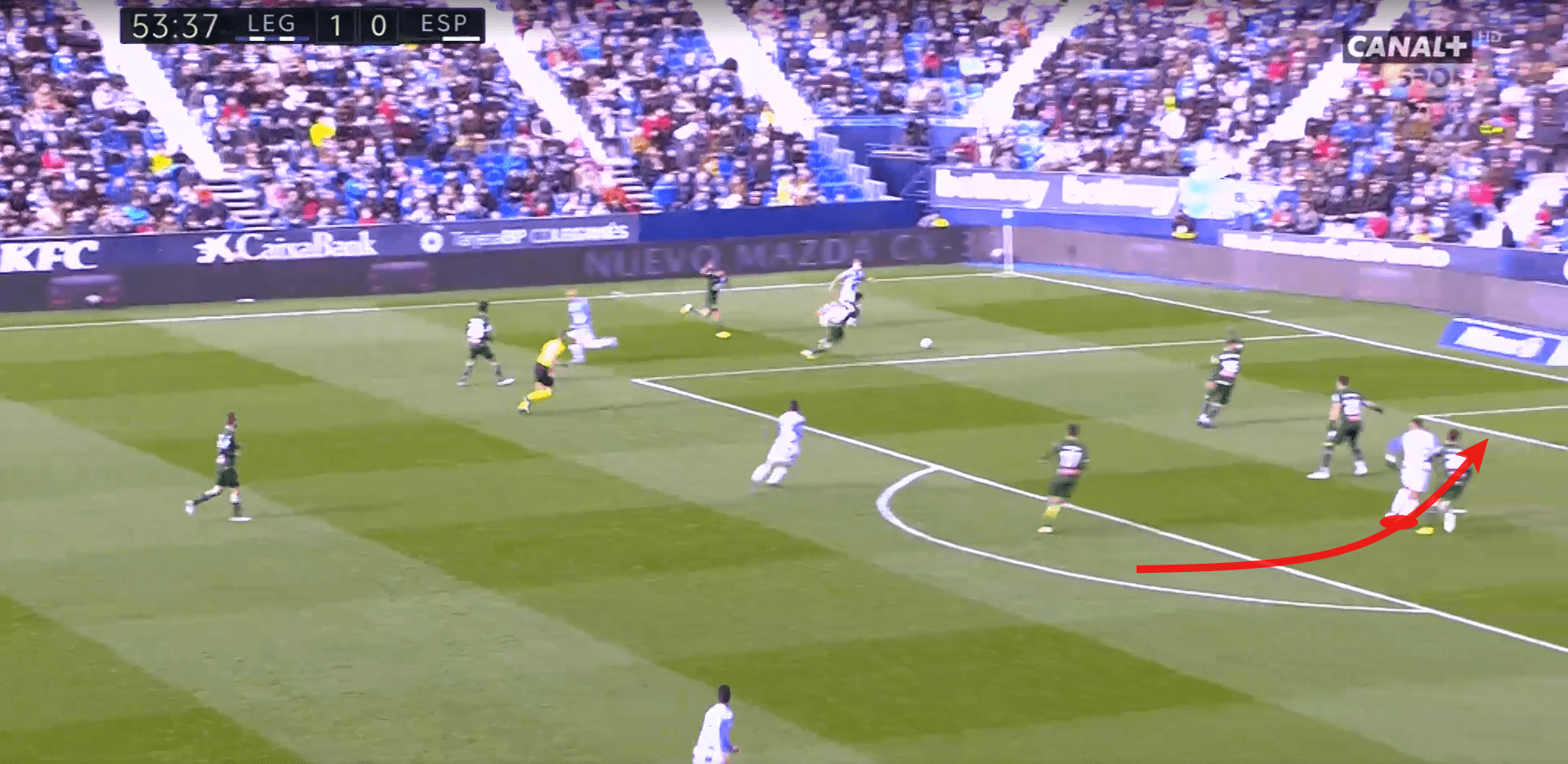
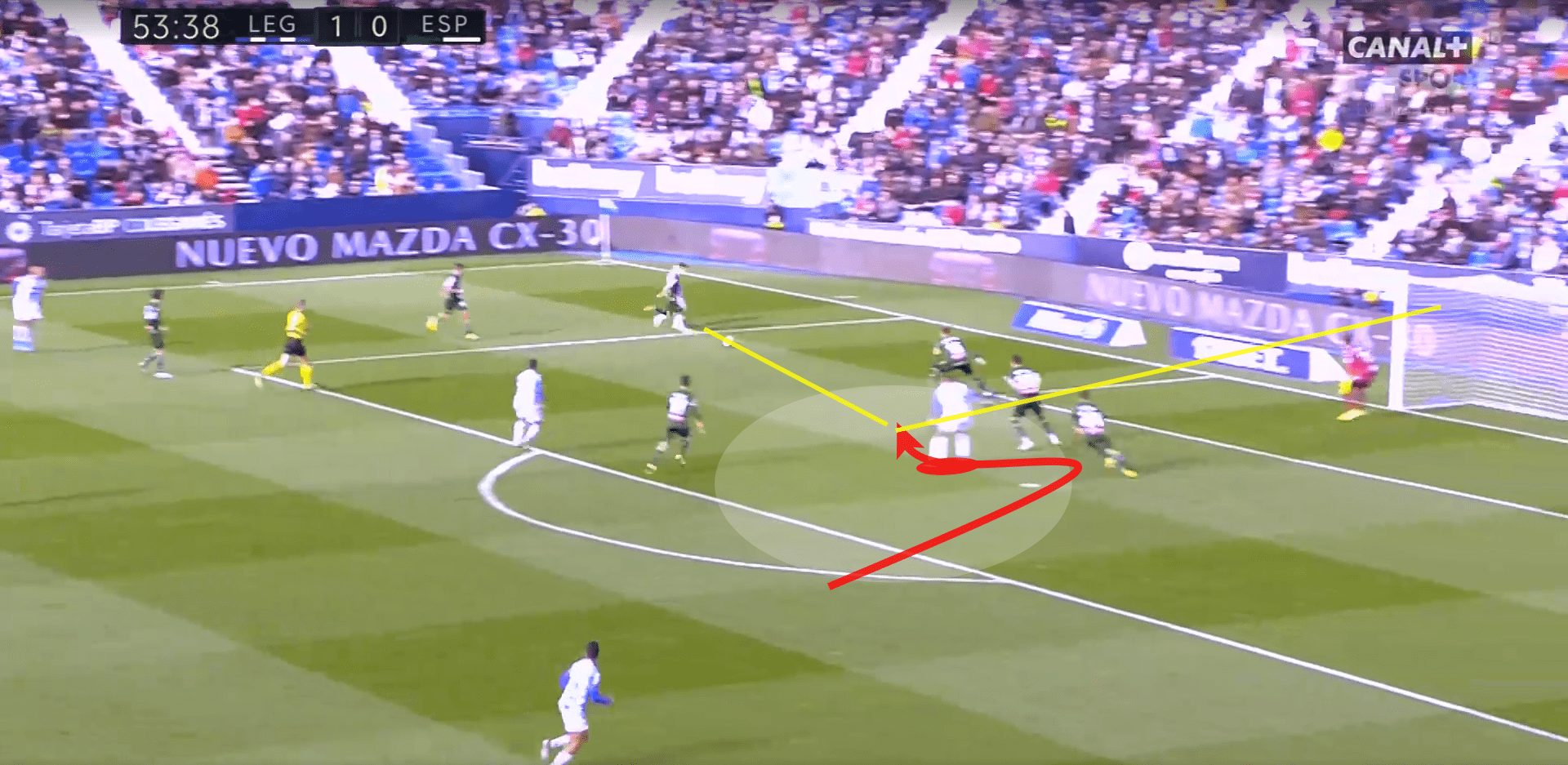
What is also impressive is his reading of the game and anticipation. There is no better example than in his movement for his goal against Espanyol, running through and looking to get into the six-yard box first, he sees the Espanyol defence getting back deep quickly without support from midfield and immediately cuts back on his run into an open space which provided him with plenty of time to get his shot away and fire the ball into the back of the net. That natural instinct is exactly what Sevilla have been missing, with the laboured De Jong becoming predictable in his movement.
Hold up play
In one of the major changes to Lopetegui’s approach since moving to Sevilla has been opening himself up to more of a direct, long ball style. Sevilla rank fifth in La Liga for long passes and rank behind only Real Madrid and Barcelona for the accuracy of these passes. For En-Nesyri, who is used to Leganés’ long ball tactics which have provided him with 2.43 received long passes per match, meaning few players in the division can compete for that experience in providing an outlet and sparking hold up play in the final third.
Often he will start these moves in a central position, looking to run in behind to the flanks to position himself wide to win the headers. This is an approach that Lopetegui has already taken advantage of in this example against Levante as shown here. He begins centrally but as Diego Carlos plays the long ball over the top, En-Nesyri makes the run wide in order to spread the Levante defence and create a gap for a runner. At Leganés, this would be Martin Braithwaite as his forward partner, but at Sevilla, it is a more dynamic approach.
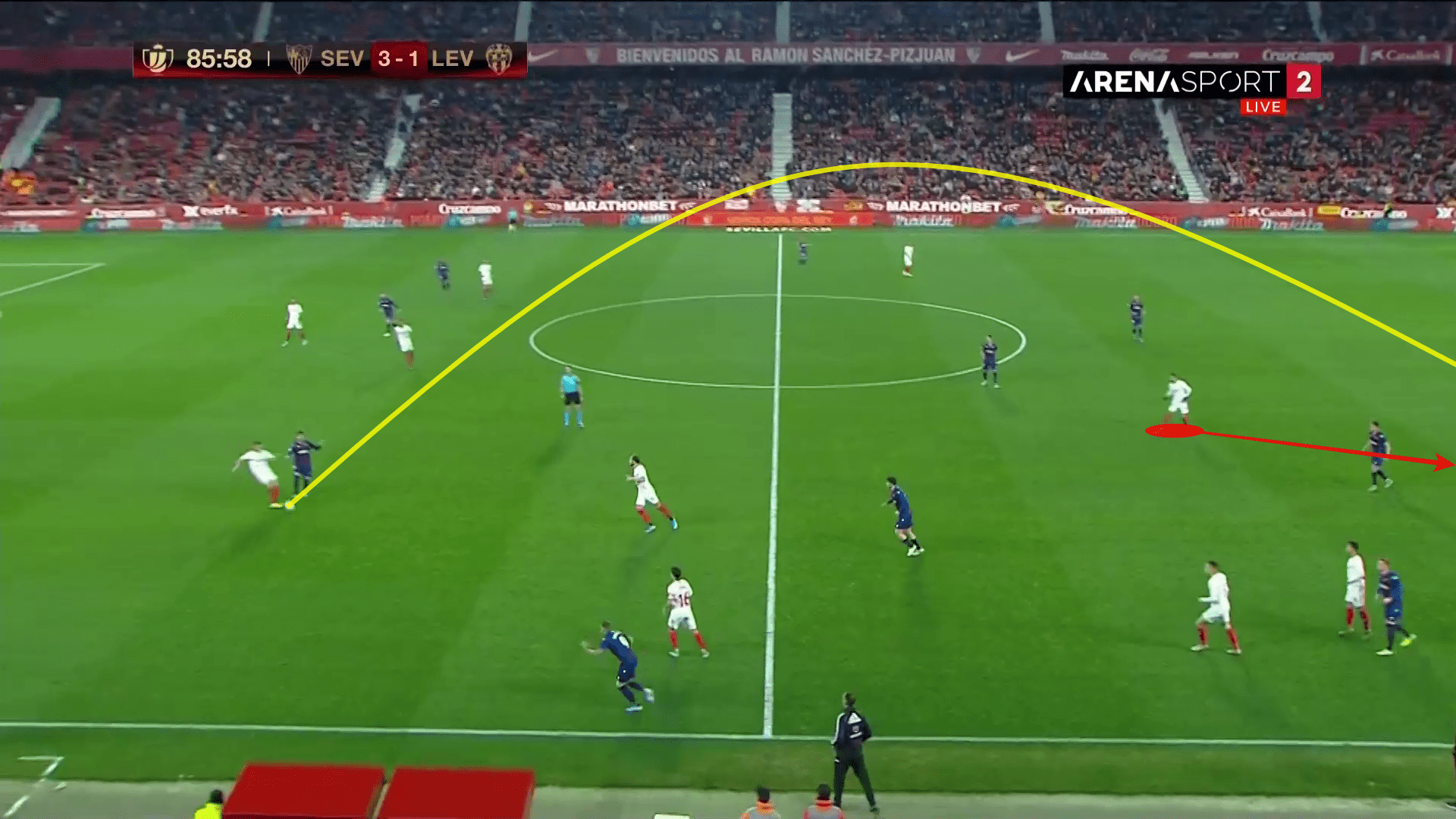
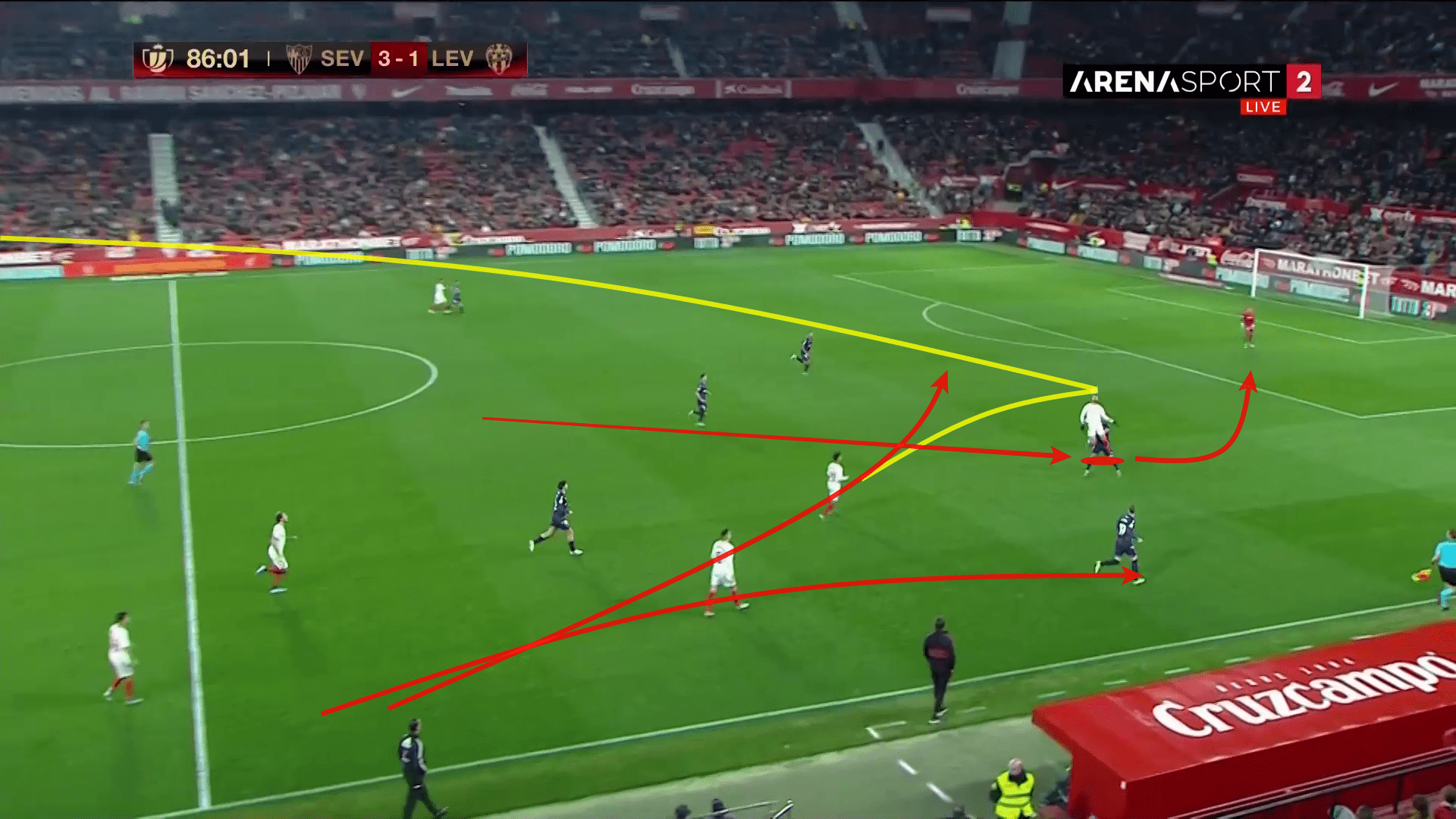
Instead, the two players on that flank make runs, one being the overlapping full-back, going down the wing to provide a wide option to keep the ball stretched and to pull the opposition defence apart without allowing the central defender to simply pass En-Nesyri over to a full-back. The other runner is the central midfielder on that side, who will make the central run in behind En-Nesyri, looking for any flick-on or knock down. This three-pronged attack is a successful way to get teams on the backfoot and outnumbered immediately, proving a viable counter-attacking approach.
Pressing
Last but not least is how En-Nesyri can contribute to Sevilla’s pressing game. Lopetegui demands that his players in attack provide high work-rate and press from the front. At Leganés, the approach was not quite the same, and so it may take some time for the striker to get used to this new approach, but it is one which he has shown signs of doing well. Often, he would find himself wide on the ball when on the counter or chasing a direct pass, and he would not give up on the ball and would instead begin the press.
Without great support from his team-mates as they instead focused solely on getting back into forming their low block, En-Nesyri would shoulder a high amount of pressing in comparison to his team-mates. With a greater pressing system and tactic in place under Lopetegui, it will be the time to tell if he does have the work-rate to sustain such a press within an approach where it is not only the intensity of his press which is required. In such set-ups, he cannot afford to slack off as it would create vulnerabilities where his team-mates have pressed, unlike a press on his own.
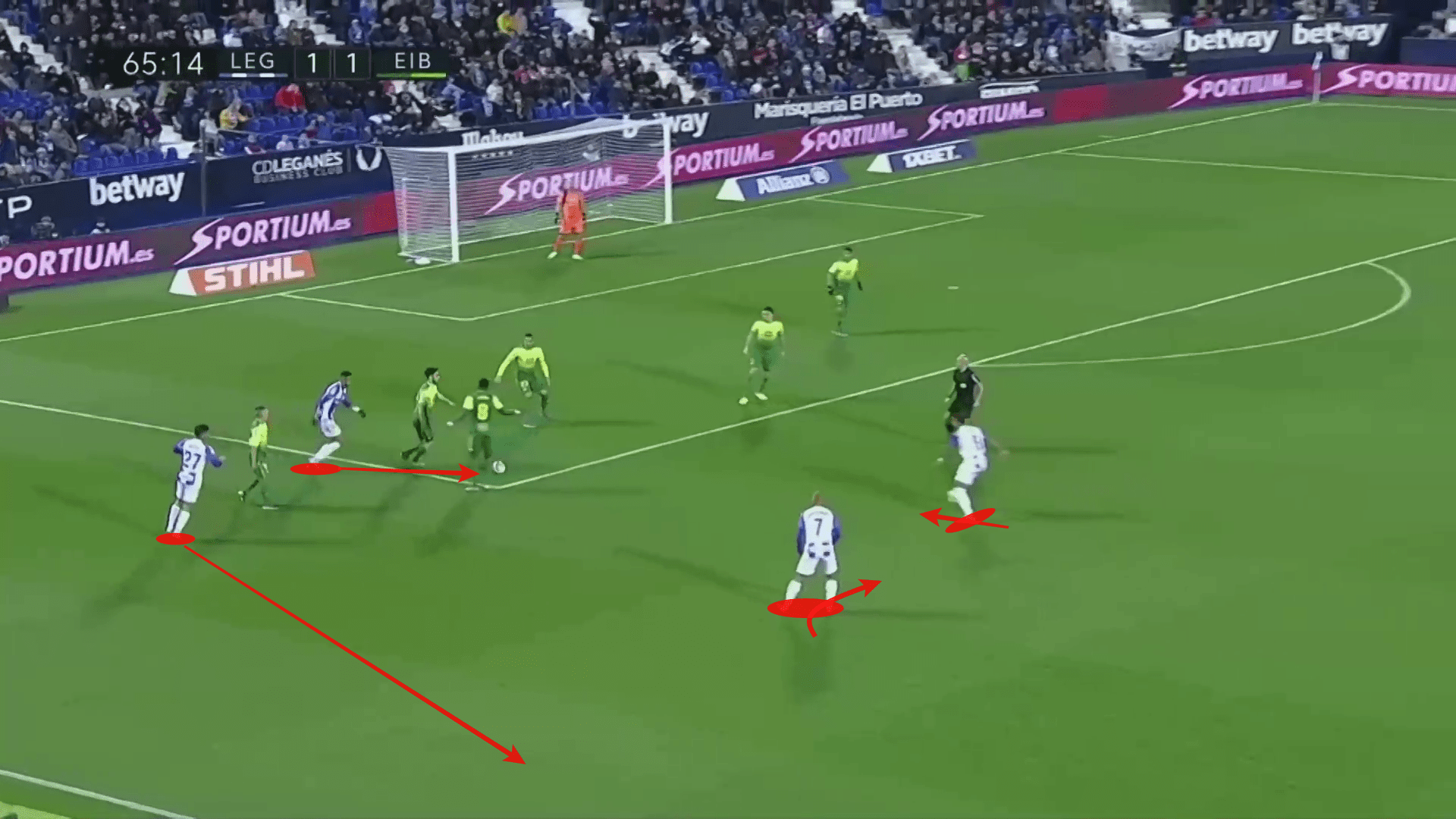
The way in which En-Nesyri adapts to this side of his game could be decisive in whether or not his spell turns out to be a success or not. Lopetegui has made it clear, particularly with his treatment of Hernández and Dabbur, that he will not tolerate any players who do not put in the footwork when it comes to defending from the front. Gaining consistency in a more intensive pressing team in Seville will be a huge factor in determining whether or not his transfer fee is a bargain for Monchi and company.
Conclusion
On paper, En-Nesyri has all of the ingredients of what is required to make Sevilla’s attack click and really make the difference. His name may not be the kind of statement that Sevilla fans could have been hoping for, but he has all of the requirements that Lopetegui would have been looking for. A clinical finisher who poses a threat in the box and one who can hold the ball up well, he is much like the kind of forward that Lopetegui has always looked to build his team around. Unlike Dabbur and Hernández, patience will be available for the former Leganés man, but he will hope to hit the ground running given his natural fit into the side.





Comments